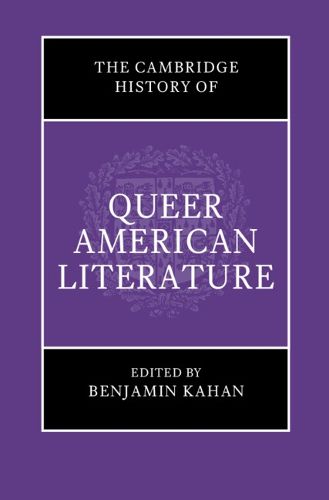Readings Newsletter
Become a Readings Member to make your shopping experience even easier.
Sign in or sign up for free!
You’re not far away from qualifying for FREE standard shipping within Australia
You’ve qualified for FREE standard shipping within Australia
The cart is loading…






Moby-Dick's Ishmael and Queequeg share a bed, Janie in Zora Neale Hurston's Their Eyes Were Watching God imagines her tongue in another woman's mouth. And yet for too long there has not been a volume that provides an account of the breadth and depth of queer American literature. This landmark volume provides the first expansive history of this literature from its inception to the present day, offering a narrative of how American literary studies and sexuality studies became deeply entwined and what they can teach each other. It examines how American literature produces and is in turn woven out of sexualities, gender pluralities, trans-ness, erotic subjectivities, and alternative ways of inhabiting bodily morphology. In so doing, the volume aims to do nothing less than revise the ways in which we understand the whole of American literature. It will be an indispensable resource for scholars, graduate students, and undergraduates.
$9.00 standard shipping within Australia
FREE standard shipping within Australia for orders over $100.00
Express & International shipping calculated at checkout
Moby-Dick's Ishmael and Queequeg share a bed, Janie in Zora Neale Hurston's Their Eyes Were Watching God imagines her tongue in another woman's mouth. And yet for too long there has not been a volume that provides an account of the breadth and depth of queer American literature. This landmark volume provides the first expansive history of this literature from its inception to the present day, offering a narrative of how American literary studies and sexuality studies became deeply entwined and what they can teach each other. It examines how American literature produces and is in turn woven out of sexualities, gender pluralities, trans-ness, erotic subjectivities, and alternative ways of inhabiting bodily morphology. In so doing, the volume aims to do nothing less than revise the ways in which we understand the whole of American literature. It will be an indispensable resource for scholars, graduate students, and undergraduates.